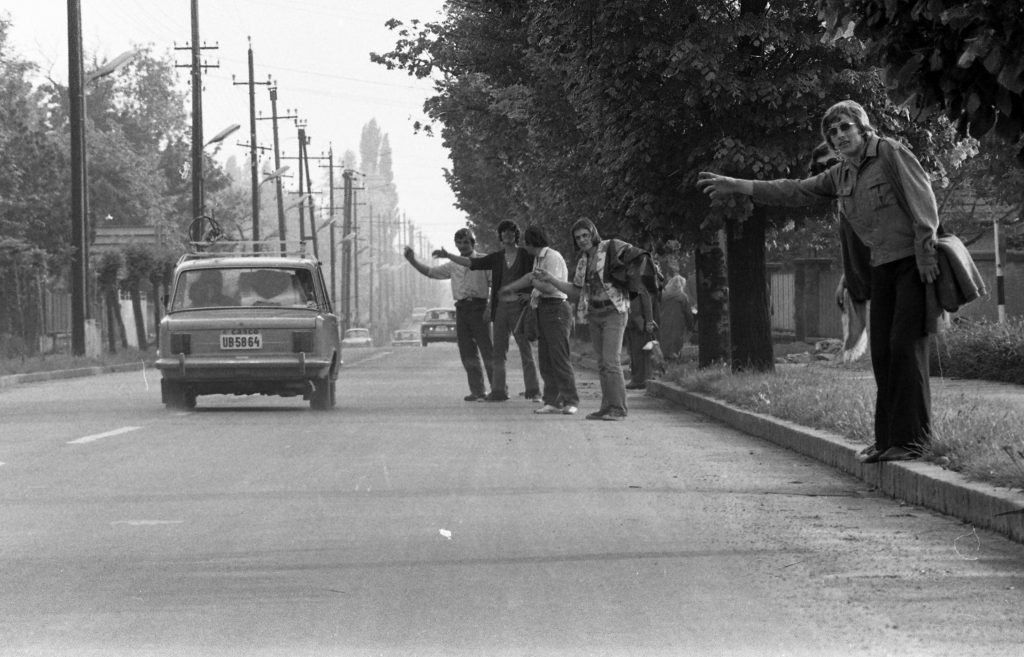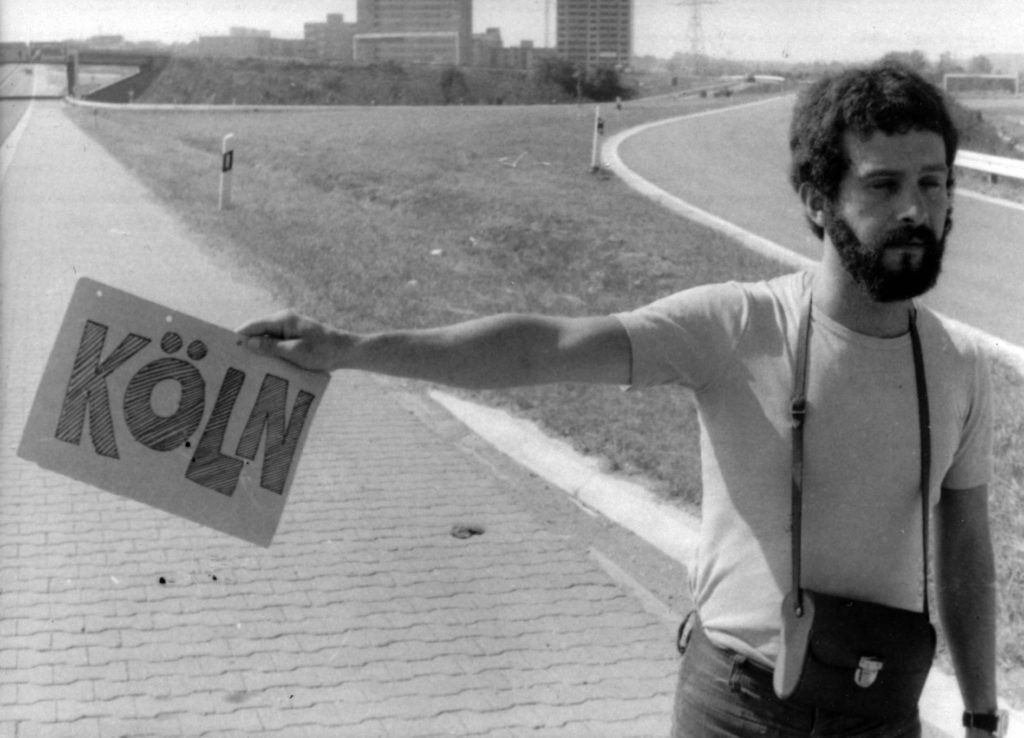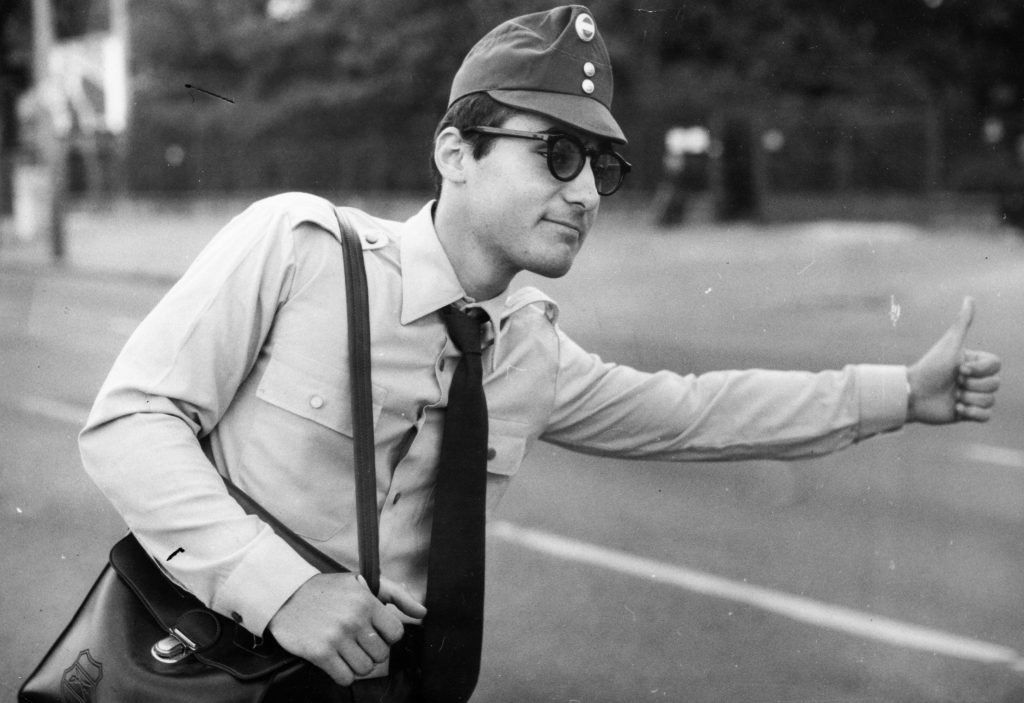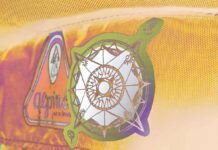A szerző kísérletet tesz arra, hogy összefoglalja fél évtized stoppos tapasztalatait: líraian, de a praktikum felől vizsgálva az utazás egyik legizgalmasabb és legromantikusabb módját.
Az írás angol változata lentebb olvasható. You can read the English text below.
1. Lehetőleg utazz egyedül! Hagyj otthon mindent, amit csak lehet. Fogd viseltes hátizsákodat és állj ki az út szélére: légy egyedül, akár a kisujjad, légy egyedül, és érezd a mellkasod mögött a nyomást, majd azt, ahogyan már száraz a szád. Félj egy kicsit és vágj neki. Ha egyedül indulsz, sokkal hamarabb áll meg autó Neked.
2. Elméletileg bármikor és bárhová el lehet jutni stoppal, de az igazsághoz az is hozzátartozik, hogy vannak időszakok, amikor érdemesebb próbálkozni, vannak úticélok, ahová gyorsabban el lehet jutni stoppal. Mindenképpen megkönnyíti a dolgunkat, ha nyáron utazunk ezen a módon, továbbá a fesztiválok körzete és a Balaton aurája mindig szerencsésebb úttal kecsegtet. A Művészetek Völgyében pedig egyenesen nem is érdemes másképpen utazni!
Érdemes délelőtt kilenc és tíz óra, vagy délután kettő és három között próbálkozni; a csúcsforgalom ugyan lecseng, de az ebben az időszakban utazó autósok állnak meg szívesebben, hiszen már ők sem sietnek sehová. Máskülönben ezen paraméterek szeszélyesek; még késő éjjel sem teljesen esélytelen vállalkozás: a körülmények extremitása egy idő után a visszájára fordul és nő a siker valószínűsége. Tökéletes példa erre a néptelen utak esete: ugyan rajtuk kevés az autós, de akik mégis arra mennek, tisztában vannak ezzel, általában ráveszik magukat, hogy megálljanak. Ezekben a helyzetekben az sem ritka, hogy az autós elhajt melletted, aztán pár perc múlva visszafordul, mégis felvesz.
3. Mindig olyan útszakaszt válassz, ahol jól látsz és jól látszol; legyen elég hely a sofőr számára is, ahová félre tud állni akár percekre is. Ne viselj napszemüveget, semmit, ami eltakarja az arcodat, lássák az emberek a szemedet. Mindig fordulj szembe a forgalommal és mosolyogj, árassz bizalmat. Sose stoppolj ittasan vagy fáradtan, ellenben sapka és víz legyen nálad! Hagyd a bőröndöket otthon, kevesen fognak megállni, ha látják, hogy tele vagy aggatva pakkokkal.
4. Ha a fentiek már teljesültek és félreáll egy autó, akkor is légy kezdeményező! Te kérdezz előbb, szólítsd meg udvariasan az autóst és tudakold meg, hogy merre tart! Ha gyors vagy, akkor szemügyre tudod venni őt magát, nem mellesleg az autóját is. Bízz az ösztöneidben, és ha nem szimpatikus a fuvar, akkor válasza után mentsd ki magad: sajnálod, de te éppen nem arra tartasz, vársz inkább tovább. Mindenesetre ne áltassuk magunkat: a stoppolás mindkét fél részéről bizalomjáték, a kockázat sosem lesz nulla; ez a műfaj egyik sava-borsa, tehát érdemes magunk mögött hagyni az előítéleteinket is.

5. Így érkezünk ahhoz a ponthoz, hogy vajon kik fognak megállni a stopposoknak. Vannak tendenciák, de az élet ennél jóval rafináltabb: e sorok írója már a Nemzeti Színház zord igazgatójának is volt alkalmi utasa. A tapasztalat alapján viszont elsősorban azok fognak megállni, akik voltak sorkatonák és maguk is sokat álltak az út szélén hazafelé tartva, tehát a negyven feletti férfiak. Jellemző még, hogy azok veszik fel a stopposokat, akiket munkájuk az utakhoz köt: fuvarosok, futárok, árufeltöltők, kamionosok, utazóügynökök, ingázók.
6. Ha már az autóban ülsz, akkor válik igazán érdekessé az utazás. Része leszel egy ismeretlen ember saját terének. Egy olyan ember terének, aki szívességet tesz neked, ráadásul nem elvárható szívességet. Ennek ellenére a stoppolásnak ez az egyik legszigorúbb szabálya: sem pénzt, sem más ellenszolgáltatást nem várhat el a sofőr, sőt, ő az, aki ezekre a percekre vagy órákra Isten és ember előtt felel érted. Valamit azonban tehetsz érte. Ha hallgatni akar, akkor hallgass vele együtt, ha beszélgetni szeretne, akkor viszont vedd elő legőszintébb és legnyitottabb énedet.
Beszélgessetek hosszan, kérdezzétek ki egymást, hogy merről és merre mentek, majd egy idővel a saját közös vágányukon haladnak a történetek. Egy asszony, akinek a benzinkútját elmosta a vörösiszap. Egy szír fiú, aki Ausztriában menekülteket tanít. Egy szótlan zenetanár, aki fesztiválra siet. Egy cigány autónepper, aki éppen Toyotát szállít, de a kedvedért kerül egyet. Egy építési vállalkozó, aki az utolsó pillanatban rohant el a hiányzó alapanyagokért, mégis felvesz. Egy idős bácsi, akinek kocsijába ketten alig fértek be, nemhogy hárman! A féllábú srác, aki a műlábában piát csempészett a fesztiválra. Képeslapok, rajtuk pedig a valóság, izgalmasan és csupaszon.
7. Előfordul az is, hogy nem jön autó. Vagy egyszerűen nem áll meg senki. Órákon át állsz a tűző napon a főút mellett minden nélkül, társak nélkül, elhalad előbb száz, majd kétszáz, végül ezer autó és megint semmi. Nagyon hosszú idő is eltelhet, órák is. Kicsit utálod is magadat, hogy ilyen hülye és romantikus vagy. Ki stoppol manapság? Aztán mégis megáll valaki és felvesz. Mindig fog jönni egy autó, amelyik majd lassít és benne ember ül, aki szívesen továbbszállít.

Hungarian Hitchhiking Guide
The writer attempts to summarise all his hitchhiking experiences from the past decade in a lyrical way, while describing the most romantic and exciting way it can be done.
Travel alone if possible; leave all unnecessary belongings behind. Grab your worn-out backpack and settle down by the road. Be solitary like a stone; be alone and feel the increasing pressure in your chest. Feel your mouth drying out; be anxious to begin your journey. If you are alone you are much more likely to get a lift.
In theory, hitchhiking can get you anywhere, anytime, but the truth is that there are certain periods of time when getting a ride is more likely. There are also particular destinations you can get to with ease by hitchhiking. It certainly makes your journey more effortless if you want to travel from a busy area like touristy towns in the summer or the surroundings of festivals, and the atmosphere of Lake Balaton indicates a simply higher chance of good fortune. And thumbing is a must to the Valley of Arts.
It is highly advised to travel between 9 and 10 a.m. or between 2 and 3 p.m. At these times the rush hours are over and our potential driver is much more willing to stop since they are not in a hurry anymore. But this is not carved in stone; it is not totally hopeless to get a ride even in the middle of the night – just be patient and persistent. Due to the extreme circumstances, in a matter of time your chance of bumming a ride could take a 180 degree turn. Roads that lack traffic might appear unworthy to even consider thumbing on, but that conclusion would be hasty. In fact, whoever drives on roads like these is very aware how abandoned these legs are and therefore they are more likely to give you a lift. Even in situations like these a few cars will surely pass you by until one eventually stops.
Speaking of the ride, if you want to get one you definitely need to keep these factors in mind; take these as benchmarks: First always chose a stretch of road where you are easily visible to the oncoming vehicle, which also needs enough space to pull over for just a few moments. Do not wear sunglasses or any item of clothing that covers your face – let them see your eyes. Face the upcoming traffic and smile – you must look dependable. Never try hitching a ride while you are drunk or exhausted. Have a cap and a bottle of water with you, but forget about suitcases – no person on Earth will stop if you have a ton of luggage.

The question then arises of who will stop for hitchhikers. There are some tendencies, but life is much more sophisticated than that: the writer of these lines has already been the temporary passenger of the National Theatre’s stern director. According to experience, those who stop are mainly people who used to be enlisted men, basically men over 40 years, who were also once standing by the roadside themselves in the past while on the way back home. It’s typical as well, that people who give lifts have a connection with the roads because of their work. For instance: delivery drivers, couriers, shelf-stockers, truckers, travelling salesmen, and commuters.
When you get into a car, this is the point when it gets more interesting. You will be part of a stranger’s personal space. The personal space of a man who does you not just a simple favour, but a favour which is unexpected. Even so, one of the strictest rules of hitchhiking is: neither money nor any kind of service should be expected from you in exchange for the lift; moreover, in those minutes or hours the driver is the one who is responsible for you under all circumstances. However, there’s one thing that you can do for him or her. If your driver wants silence, keep quiet, but if he or she wants to talk, then be as talkative and open as you can.
Make long conversations, ask each other about where you want to go from where; it will take some time, but one story will lead to another. A woman whose gas station was flooded by the red mud. A Syrian boy who teaches refugees in Austria. A wordless music teacher who is in a hurry to a festival. A gypsy car swindler who is delivering a Toyota, but who is taking the scenic route just because of you. A building contractor who has purchased raw materials in the very last moment, but still picks you up anyway. An old man whose car can barely endure two people, although there are three of you, and he still manages to give you a lift. A one-legged guy who smuggles drink with the help of his artificial leg. These are postcards which show the thrilling and bare reality.
It can also happen that there’s not a single car passing by. Or simply nobody stops. You have been standing out in the blazing sun by the highway for hours, without any company or anything, hundreds and thousands of cars have passed by, but nothing has happened. Time elapses, countless hours. You may hate yourself a bit, because you are so stupid and romantic. Who is actually hitchhiking nowadays anyway? However, after all, there will always be somebody who picks you up. A car will always come, slow down, and pull over, and there will be a person in it who gives you a lift with pleasure.
English version was made by Csanád Kneisz and Levente Johan; special thanks to Mark Menges.
Kiemelt kép: Fortepan










